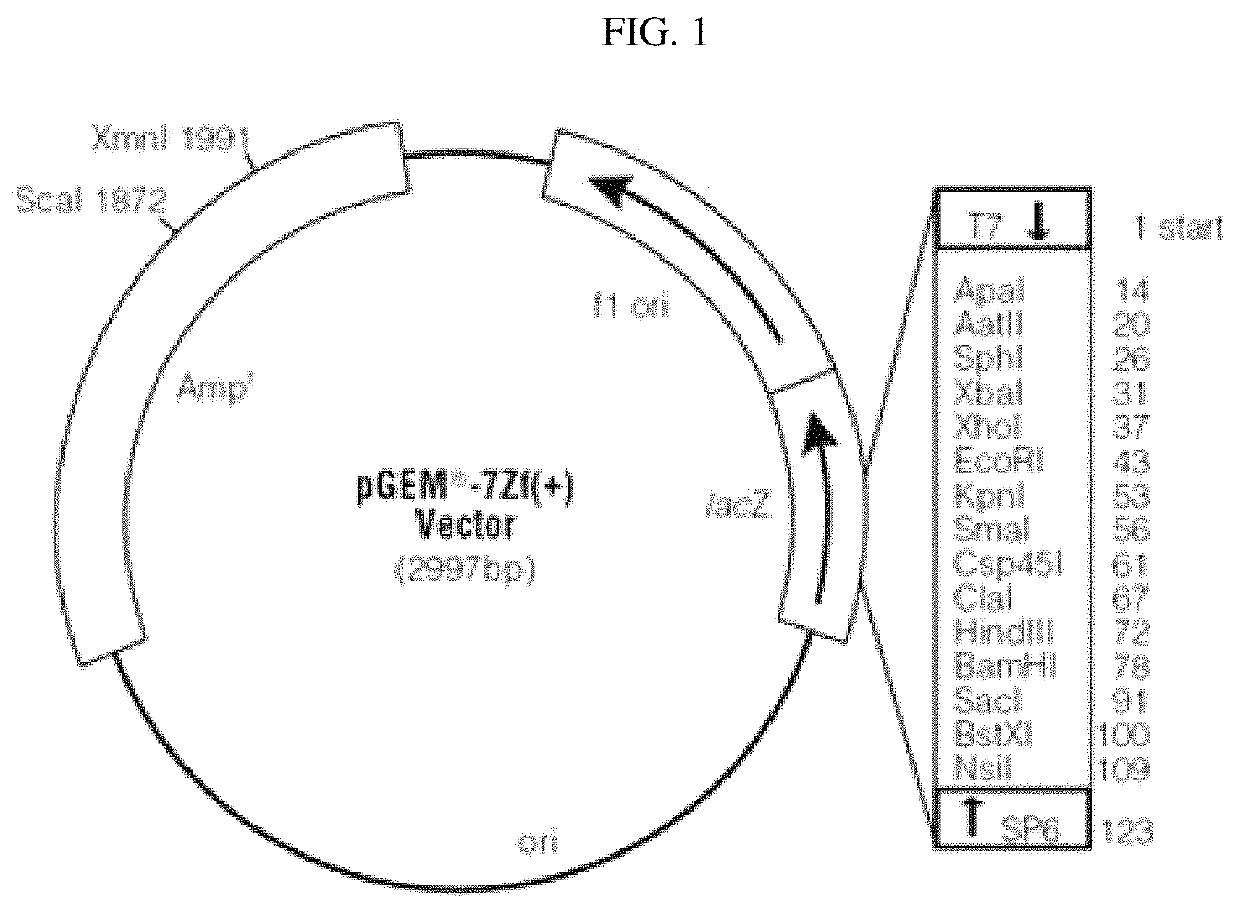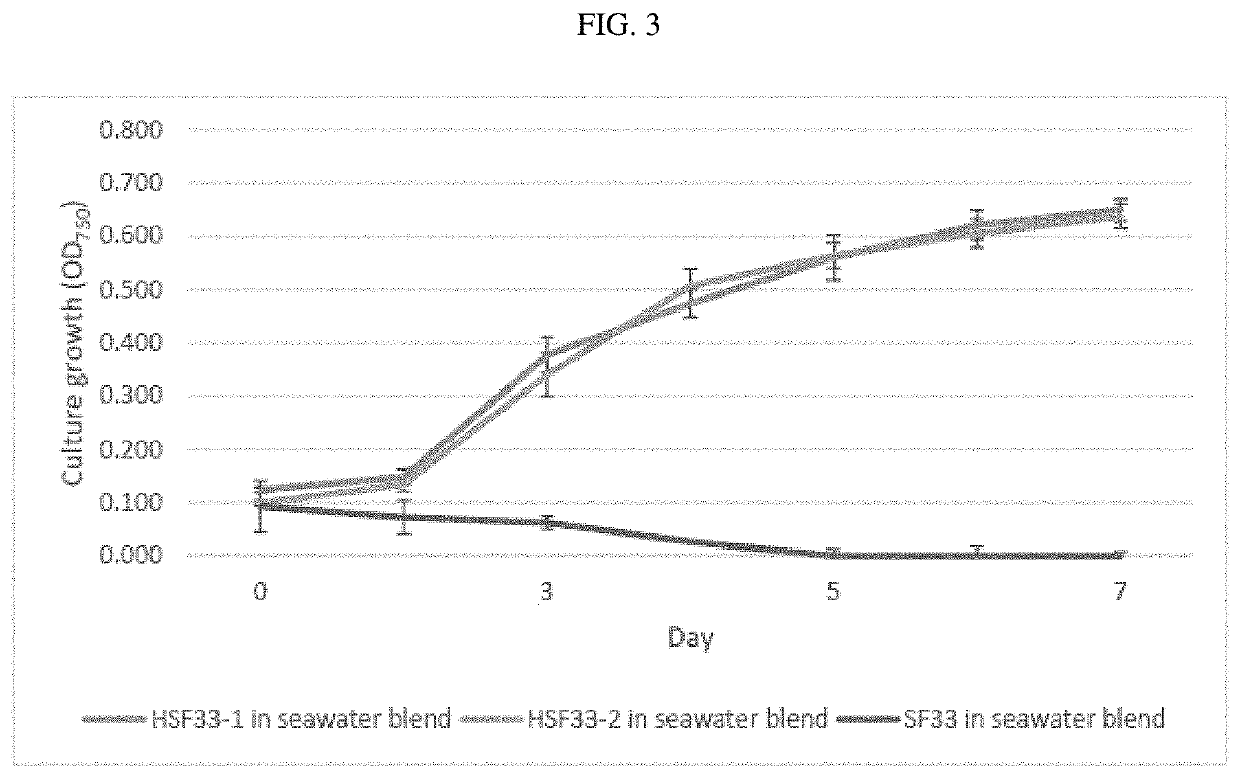Engineered cyanobacteria with enhanced salt tolerance
a technology of enhanced halotolerance and cyanobacterium, which is applied in the direction of bacteria peptides, peptide sources, bacteria based processes, etc., can solve the problems of widespread debate about biofuel production from these sources, only likely to intensify the search for alternative energy sources, and likely to impact future world energy markets. , to achieve the effect of cost-effective and fast generation tim
- Summary
- Abstract
- Description
- Claims
- Application Information
AI Technical Summary
Benefits of technology
Problems solved by technology
Method used
Image
Examples
example 1
Different Salt Concentrations on Cyanobacterial Growth
[0061]High levels of salinity cause a stress response in cyanobacteria, leading to an overexpression of certain proteins, particularly in more salt tolerant strains. High amounts of salt present in the environment can lead to diminished growth and viability in F. diplosiphon.
[0062]Preliminary results have demonstrated that F. diplosiphon does not tolerate salt concentrations above 15 g / L NaCl in solid media and 10 g / L NaCl in liquid media. The salinity of sea water is around 35 g / L which is more than twice the concentration that F. diplosiphon can tolerate. Thus, the key to unlocking this promising new source of energy is to enhance salt tolerance in this species.
[0063]Cyanobacterial species F. diplosiphon were cultivated on liquid and solid growth medium with varying concentrations of sodium chloride. See FIGS. 2A and 2B. Determination of growth rates in various salt concentrations were compared to the control (absence of salt)...
example 3
ng Proteins Involved in Stress Response
[0069]Cyanobacterial colonies grown under various light and salt parameters were subjected to proteomic analysis. Proteins were isolated using a protein isolation and purification kit. The purified protein extracts were then run in one and two dimensional gels and then analyzed for bands and spots exhibiting differential patterns of protein accumulation. The spots representing these proteins were then identified, and linked to abiotic stress tolerance in cyanobacteria.
[0070]Once the candidate proteins were identified, the corresponding genes were isolated and sequence analyzed. These gene sequences were used to transform F. diplosiphon (Kehoe, D. M. et al., “Using molecular genetics to investigate complementary chromatic adaptation: Advances in transformation and complementation,”Methods in Enzymology, 297, 279-290 (1998), which is hereby expressly incorporated by reference in its entireties for increased salt tolerance).
[0071]Genetically trans...
example 4
n of Lipids from Wild Type and Halotolerant Strains
[0072]Lipids were extracted from the wild type (SF33) and halotolerant strains at the laboratory-scale level and lipid profiles are characterized using gas chromatography-mass spectrometry. See FIGS. 4A and B.
[0073]Transformed lines were subjected to varying levels of salt media following which growth and physiological response were investigated. The biofuel efficacy of the halotolerant strain was tested in controlled laboratory tanks where environmental conditions were monitored. Steps in biofuel production involve harvesting biomass, drying, extraction using chemical, mechanical or enzymatic methods, and analysis of lipids using mass spectrometry and Nuclear Magnetic Resonance (NMR) spectroscopy.
[0074]Although preferred embodiments have been depicted and described in detail herein, it will be apparent to those skilled in the relevant art that various modifications, additions, substitutions, and the like can be made without departi...
PUM
 Login to View More
Login to View More Abstract
Description
Claims
Application Information
 Login to View More
Login to View More - R&D
- Intellectual Property
- Life Sciences
- Materials
- Tech Scout
- Unparalleled Data Quality
- Higher Quality Content
- 60% Fewer Hallucinations
Browse by: Latest US Patents, China's latest patents, Technical Efficacy Thesaurus, Application Domain, Technology Topic, Popular Technical Reports.
© 2025 PatSnap. All rights reserved.Legal|Privacy policy|Modern Slavery Act Transparency Statement|Sitemap|About US| Contact US: help@patsnap.com



